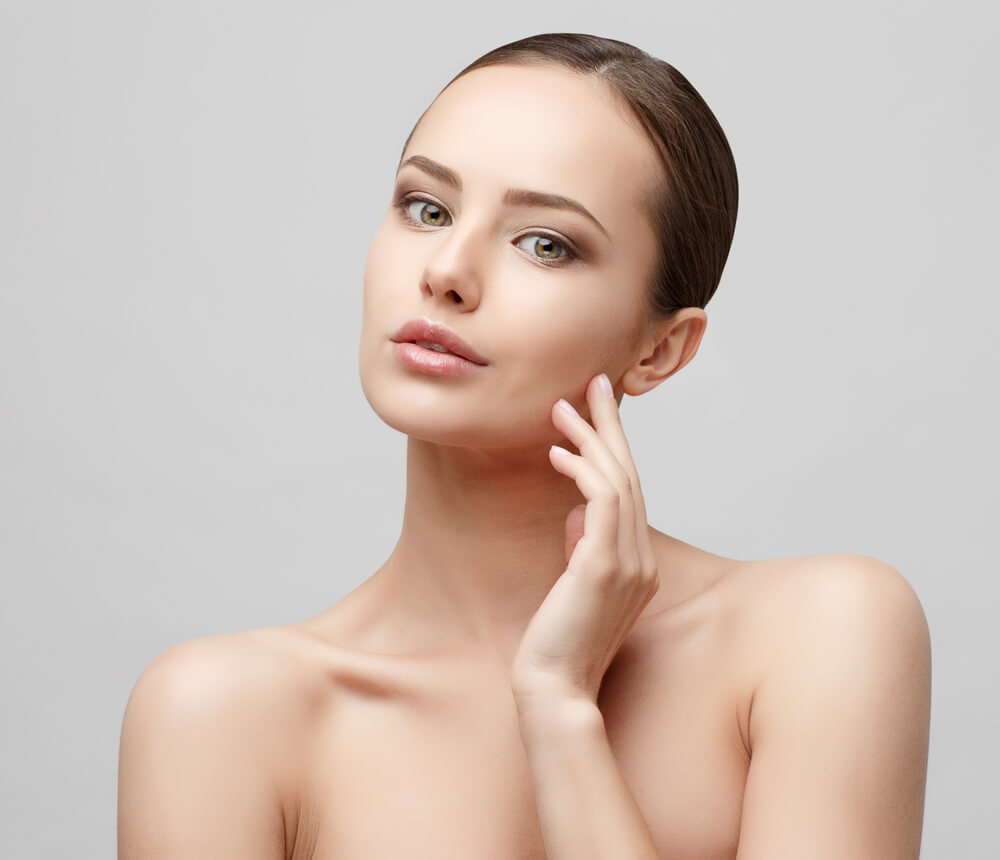
If you’re struggling with textural skin concerns, such as acne, surgical or trauma scars, stretch marks, dilated pores or milia, we have the perfect solution for you: Microneedling. It’s a treatment getting a lot of hype these days and for good reason! Microneedling can address a plethora of skin conditions but today let’s focus in on the textural ones…
What is Microneedling?
We use the Dermapen 3MD™ at NuAGE, which is the gold standard on the market for this treatment. The Dermapen 3MD device is a pen-like wand that utilizes single-use, sterile needle cartridges to make thousands of tiny pokes (aka micro-channels or micro-injuries) in the epidermis and dermis – the outermost and middle layers of the skin. By creating these micro-injuries, we’re using the body’s natural healing response to our advantage and manipulating it for the results we want. Crazy, right?!
So, How Does this Healing Response Work?
With microneedling treatments, two distinct processes occur: the initial inflammatory response and the secondary wound healing response. We’ll dive a little deeper into each of these biological responses that take place.
The Inflammatory Response: The skin’s initial reaction
Phase 1: Haemostasis (1-10 minutes)
- As the needles reach the dermis, they produce pinpoint bleeding.
- Nutrient-rich blood surges to the treated area.
- Coagulation of blood begins to occur while anti-inflammatory cells and plasma are released.
Phase 2: Inflammation (1-10 days)
- White blood cells get to work carrying away unwanted pigment, or particles within the tissue.
- Growth factors are released which help to repair damaged tissue and maintain collagen and elastin production.
Phase 3: Proliferation (2-21 days)
- Newly formed collagen is deposited to the treated area.
- Skin cells continue to repair the treated area.
- The body removes cells that are no longer required, such as melanin, fibrous tissue, etc.
Phase 4: Maturation (20 days-24 months)
- Type II collagen, which makes up the fluid and function of cartilage and joints, is replaced by Type I collagen, which supports skin, muscles, bones, and hair.
- Collagen production continues to regulate so the results of treatment keep on going.
The Wound Healing Response: The repair process that happens within the skin after chronic or deeper micro-injury.
Book Your Microneedling Session in our Vancouver Clinic Today!
While this process is typically broken down into three distinct phases (inflammation, proliferation, and maturation), the creation of pinpoint bleeding adds haemostasis as an initial starting point and ensures controlled wound healing by stimulating fibroblasts, or the cells that scurry to the injured area and deposit collagen.
Since microneedling with Dermapen is fractional and doesn’t produce heat or ablate (remove) the epidermis, we can effectively treat all skin types. The trauma created by destroying the epidermis, such as with ablative treatments, can often result in the thinning of the skin, loss of dermal papillae, which serve to strengthen the bond between the dermis and epidermis and encourage the flow of oxygen and nutrients between the two layers, and damage to melanocytes, creating post-inflammatory hyperpigmentation.
If cells are overstimulated and not properly discarded of by the body, granulomas and fibrotic tissue may begin to form, which is a fancy way of saying you’ll experience scarring. The results of Dermapen microneedling regulate and balance the healing process. This means seamless, scar-less healing with virtually no risk of post-inflammatory hyperpigmentation.
 If all of that went right over your head, here’s the simple low-down: Microneedling creates a controlled injury in the skin by making thousands of itty-bitty holes, which then stimulate all your cells to kick it in gear! When treating textural concerns, the body will realize that it has either healed incorrectly before, by becoming raised or indented or has created too many cells in one area, like in the case of milia and keratosis pilaris. It then makes up for its mistake and the texture problems improve dramatically.
If all of that went right over your head, here’s the simple low-down: Microneedling creates a controlled injury in the skin by making thousands of itty-bitty holes, which then stimulate all your cells to kick it in gear! When treating textural concerns, the body will realize that it has either healed incorrectly before, by becoming raised or indented or has created too many cells in one area, like in the case of milia and keratosis pilaris. It then makes up for its mistake and the texture problems improve dramatically.
What to Expect
Are you pondering how terrifying the idea of thousands of punctures in your skin seems? Well, fear not! Microneedling is seriously pretty painless. Before any of the big (actually, very small) needles come out, we’ll numb the area being treated and let that marinate for a good little while. Once the numbing cream is removed, you’ll hardly feel a thing. Towards the end of the procedure, your skin may begin to feel a little warm – thanks to that inflammatory response kicking in – and slightly irritated. No one ever said beauty was easy! We think the sensation can be best described as a sunburn.
Now, you’re probably thinking, “That sounds great but I don’t have time to recover from having a zillion tiny punctures!” but think again! Surprisingly, there’s little to no downtime associated with microneedling, which is one of the 1,001 reasons we love it so much. Immediately after, you may also look like you have a mild sunburn, as skin can be slightly red and inflamed, but that’s nothing a little makeup can’t cover. Before you leave, we can apply a special “foundation” that will mask the redness without compromising your results or harming your skin. We don’t recommend throwing on just any foundation and whenever possible, try to wait at least 12-24 hours before applying makeup on freshly treated skin.
Well, now that you know how easy the whole thing is, what are you waiting for? Book your complimentary consultation or first treatment at NuAGE Laser today! We’re your Vancouver microneedling experts and we’ll help you eliminate textural concerns and press the reset button on your skin.


